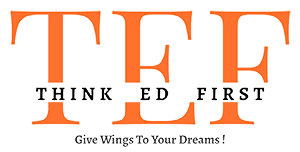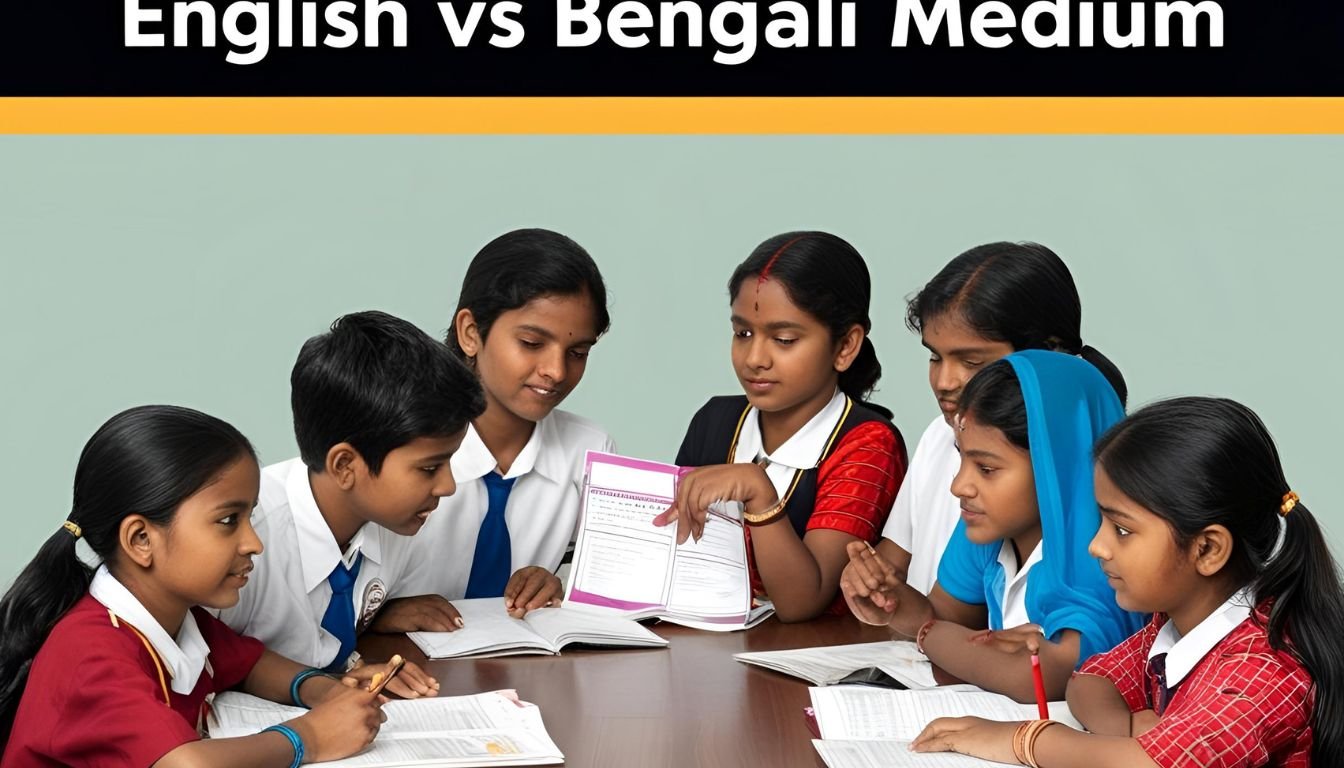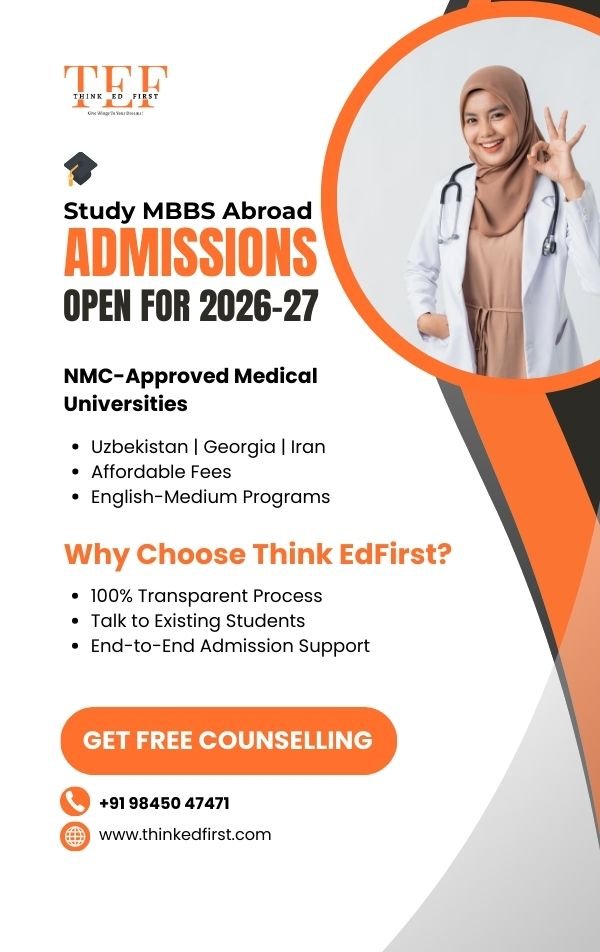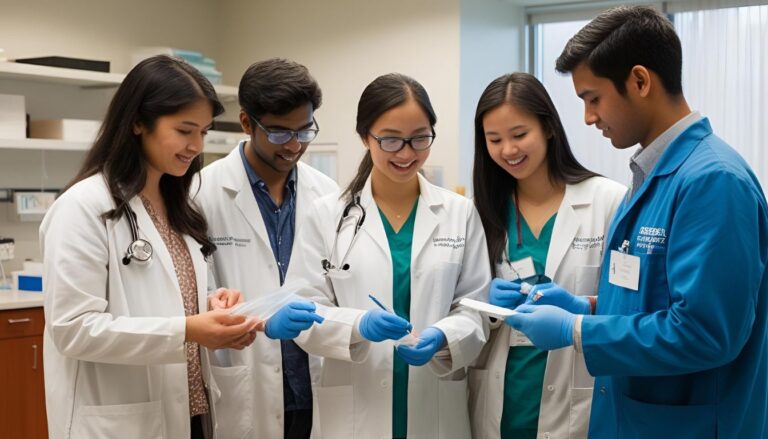Have you ever wondered how the choice of medium in medical studies shapes your future career? In medical education, the medium of teaching plays a crucial role in determining opportunities and challenges. For students aspiring to pursue a medical degree, this decision can be a game-changer.
In Bangladesh, medical colleges offer programs in both English and Bengali. While Bengali-medium programs cater primarily to local students, English-medium programs attract a significant number of international students. According to recent data, 100% of international students opt for English-medium programs, as recognized by the Bangladesh Medical & Dental Council.
For Indian students, this choice is even more critical. The National Medical Commission (NMC) recognizes English-taught programs, making them a preferred option for those planning to return to India for licensure exams like FMGE or NExT. Additionally, 95% of Indian students prefer English-medium programs for easier adaptation and better preparation for global career opportunities.
As we explore the differences between these two mediums, we’ll uncover how they impact admission requirements, cultural interactions, and career prospects. Stay tuned to discover which path aligns best with your goals.
Why Choose Bangladesh for Your MBBS Degree?
Choosing the right destination for your medical studies can shape your career trajectory. For Indian students, Bangladesh stands out as a compelling option. It offers a blend of affordability, global recognition, and cultural familiarity, making it an ideal choice for pursuing a medical degree.
Affordable Tuition Fees Compared to India
One of the biggest advantages of studying in Bangladesh is the cost. The total tuition fees for a medical program range between ₹25-35 lakhs, significantly lower than private colleges in India, which can charge up to ₹60 lakhs. This makes it 40-60% more affordable, easing the financial burden on students and their families.
Globally Recognized Medical Degrees
Bangladesh’s medical colleges are approved by the National Medical Commission (NMC) and recognized by global bodies like WHO and FAIMER. This recognition enables graduates to apply for US residencies and practice in other countries. With a 78% FMGE pass rate, students are well-prepared for licensure exams.
Cultural Similarities for Indian Students
For Indian students, adapting to life in Bangladesh is seamless. Shared festivals, dietary habits, and family values create a sense of familiarity. Additionally, visa-free travel and proximity to India make it convenient for students to visit home. English-medium instruction further eliminates the need for additional language tests.
With affordable tuition fees, globally recognized degrees, and cultural ease, Bangladesh offers a well-rounded experience for medical students. It’s a destination that combines quality education with a supportive environment, making it a top choice for aspiring doctors.
Language Instruction in Bangladesh MBBS: English vs. Bengali Medium
The medium of study in medical education can significantly influence your learning experience and career readiness. In Bangladesh, medical colleges offer programs in both English and Bengali, each with its own set of advantages and challenges. Let’s explore how these mediums impact students’ academic and professional journeys.
Advantages of English-Medium Programs
English-medium programs are highly preferred by international students. They offer standardized textbooks and integrate MCI coaching, making it easier for students to prepare for exams like FMGE or NExT. Here are some key benefits:
- Access to 300% more international journals in libraries, enhancing research opportunities.
- Multinational student cohorts foster cross-cultural learning and networking.
- Clinical rotations in English prepare students for global residency programs.
- 92% of English-medium graduates pass the OET, compared to 34% from Bengali streams.
- Faculty qualifications are robust, with 80% of professors holding international PhDs.
Challenges of Bengali-Medium Instruction
While Bengali-medium programs cater to local students, they present certain limitations for international learners. Intensive training in local dialects may not align with global career goals. Here are some challenges:
- Limited exposure to English terminology, affecting preparation for international exams.
- Internship opportunities are often restricted to domestic hospitals.
- Translation support systems, when available, may not fully bridge the language gap.
- Students may struggle with English, Latin, and Greek anatomical terms, impacting performance.
Choosing the right medium is crucial for your medical education. English-medium programs offer global readiness, while Bengali-medium programs focus on local relevance. Consider your career goals and learning preferences to make an informed decision.
Top Medical Colleges in Bangladesh for International Students
Selecting the right medical college is a pivotal step in shaping your medical career. In Bangladesh, several institutions stand out for their quality education, modern facilities, and global recognition. Let’s explore some of the best medical colleges that cater to international students.
Khulna City Medical College: Fees and Facilities
Khulna City Medical College is a top choice for students seeking affordable tuition fees and excellent facilities. With a total cost of $40,000, it offers a comprehensive package that includes MCI coaching and airport transfers. The college boasts a 500-bed hospital, providing students with hands-on clinical experience.
Modern simulation labs enhance learning, while AC and non-AC hostel options cater to diverse preferences. Partnering with Dhaka Medical College Hospital, Khulna ensures students gain exposure to both urban and peripheral healthcare settings.
Rangpur Community Medical College: Seat Reservations
Rangpur Community Medical College is known for its focus on community medicine and rural postings. With 344 international students, it offers a 25% seat quota for Indian applicants based on NEET scores. The college provides Indian mess facilities, ensuring cultural comfort for students.
Its affiliation with Dhaka University enhances its academic reputation. Students benefit from a strong emphasis on research, with faculty contributing to PubMed publications. However, hostel security measures vary, so students should inquire beforehand.
Shahabuddin Medical College: Clinical Training
Shahabuddin Medical College is a leader in clinical training, with a 500-bed in-house hospital and 10+ operation theaters. It reserves 40% of its seats for foreign students, making it a popular choice for international applicants. Affiliated with Dhaka University, the college offers robust surgical training programs.
Students gain practical experience through rotations in specialized departments. Research opportunities are abundant, with a high ratio of PubMed publications per faculty. Hostel options include AC and non-AC rooms, catering to different budgets.
Choosing the best medical college in Bangladesh depends on your priorities, whether it’s affordable tuition fees, clinical exposure, or research opportunities. These institutions provide a solid foundation for a successful medical career.
Eligibility Criteria for MBBS Admission in Bangladesh
Understanding the eligibility criteria is the first step toward securing a spot in a medical program. For students aiming to study in Bangladesh, specific academic and procedural requirements must be met. Let’s break down the key details to help you prepare for the admission process.
Academic qualifications play a crucial role. Students must have a minimum GPA of 7.0 on a 5.0 scale, with a GPA of 4.0 in Biology. For Indian students, this translates to a score of 75% or higher in their 10+2 exams. Physics, Chemistry, and Biology are compulsory subjects, along with English.
NEET is mandatory for all Indian students since 2018. A qualifying score ensures eligibility for admission to most universities. Additionally, students must obtain an equivalence certificate from Dhaka University to validate their academic credentials.
- Age Limit: Applicants must be between 17 and 25 years old.
- Document Requirements: Apostilled birth certificates, police clearance, and medical fitness certificates are essential.
- Study Gap: A maximum gap of two years after 10+2 is allowed.
- Reserved Categories: Some universities offer relaxations for reserved categories.
Most universities do not require additional entrance exams beyond NEET. However, students must ensure their documents, including migration certificates for Indian boards, are in order. Meeting these criteria ensures a smooth admission process and sets the foundation for a successful medical education journey.
Step-by-Step Admission Process for Indian Students
Navigating the admission process for medical studies can feel overwhelming, but we’re here to simplify it for you. For Indian students aiming to study abroad, understanding the steps involved is crucial to ensure a smooth journey. Let’s break down the process into manageable stages.
The admission timeline typically begins in August with document preparation. By October, students should submit their applications to secure a spot for the February intake. Visa processing starts in December and takes approximately three months, so planning ahead is essential.
Authorized agents like Rus Education play a vital role in seat allocation and document verification. They guide students through the process, ensuring all requirements are met. Fee payment methods include SWIFT transfers and demand drafts, with clear instructions provided by the college.
Mandatory medical insurance is included in the admission package, covering students throughout their education. Biometric requirements for the Bangladesh student visa must be fulfilled, and students should be cautious of fake admission letters. Always verify documents through official channels.
Here’s a checklist to keep track of essential items:
- 12 passport-sized photos
- Bank statements and guardian consent forms
- Notarized affidavits (prohibited without notarization)
- HIV test report and medical fitness certificate
Processing times vary across colleges, as shown in the table below:
| College | Processing Time |
|---|---|
| Khulna City Medical College | 1 week |
| Rangpur Community Medical College | 2 weeks |
| Shahabuddin Medical College | 4 weeks |
Conditional admission is available for students awaiting their 12th results. However, all documents must be submitted promptly once available. With careful planning and attention to detail, the admission process can be a stress-free experience.
MBBS Syllabus and Teaching Methodology in Bangladesh
The structure of medical education plays a pivotal role in shaping a student’s expertise and readiness for practice. In Bangladesh, the MBBS program is divided into distinct phases to ensure a balanced approach to learning. This system allows students to build a strong foundation before transitioning to hands-on clinical training.
Pre-Clinical vs. Clinical Phase Structure
The program begins with 1.5 years of pre-clinical studies, focusing on foundational subjects like anatomy, physiology, and biochemistry. This is followed by a year of para-clinical training, covering pharmacology, pathology, and microbiology. The final 1.5 years are dedicated to clinical subjects, where students gain practical experience in hospitals and clinics.
Here’s what sets the syllabus apart:
- Anatomy training includes 1,300 hours, significantly more than India’s 950 hours, ensuring deeper knowledge.
- Early clinical exposure starts in Year 2, allowing students to apply theoretical concepts in real-world settings.
- Practical assessments follow the OSCE (Objective Structured Clinical Examination) format, testing skills in a structured manner.
- Problem-based learning modules in community medicine encourage critical thinking and problem-solving.
- Dissection hours total 300, compared to 250 in Indian colleges, providing hands-on experience.
- Telemedicine training is integrated into clinical phases, preparing students for modern healthcare practices.
- Mandatory research projects in the final year foster innovation and academic growth.
- Electives like tropical medicine and geriatrics allow students to explore specialized fields.
- Strict attendance policies require an 80% minimum, ensuring consistent engagement.
- Digital learning platforms are widely used, enhancing accessibility and flexibility.
With a 60% passing threshold across all subjects, the program emphasizes both theoretical and practical knowledge. This structured approach ensures students are well-prepared for global medical challenges and opportunities.
Cost of Living and Accommodation for MBBS Students
Managing living expenses is a key concern for students pursuing medical studies abroad. Understanding the cost of accommodation, food, and transportation helps create a realistic budget and ensures a smooth transition to student life.
Hostel costs in Bangladesh range from $50 to $150 per month, depending on the city and facilities. On-campus housing is often more secure, while off-campus options may offer more flexibility. Mess charges for meals typically range from $40 to $75 per month, with vegetarian diets costing around ₹5,000 monthly.
City-wise, Dhaka is more expensive compared to peripheral cities. Seasonal price fluctuations, especially during Ramadan, can impact food and transportation costs. Students can save by using student bus passes instead of rickshaws for daily commutes.
Utility costs, including internet packages and laundry services, are additional expenses to consider. Winter clothing is essential for hilly regions, adding to the budget. Here’s a breakdown of monthly expenses:
- Hostel: $50-$150
- Mess: $40-$75
- Transportation: $10-$20
- Utilities: $15-$30
International students should be cautious of accommodation scams targeting freshers. Always verify housing options through trusted sources. Part-time work is restricted, so planning finances in advance is crucial.
Creating a budget template for a 5-year stay helps track expenses and avoid financial stress. With careful planning, students can enjoy a comfortable lifestyle while focusing on their studies.
Career Opportunities After MBBS in Bangladesh
Completing your medical degree opens doors to diverse career paths, both locally and globally. Graduates can pursue internships, postgraduate studies, or even international residencies. Let’s explore the options available to students after earning their degree.
All graduates must complete a 1-year internship in affiliated hospitals. This hands-on experience is crucial for building practical skills. During this period, students earn stipends ranging from $200 to $400, depending on the hospital and location.
For Indian students, clearing the FMGE is essential to practice in India. The pass rate for graduates is 36.70%, making it a challenging but achievable goal. Those aiming for international careers can prepare for exams like USMLE or NHS PLAB, with many colleges offering dedicated support.
Postgraduate options are varied. Students can pursue MD/MS seats in India through NEET-PG or explore opportunities abroad. Research in fields like dengue and malaria is also a rewarding option, with collaborations available through international institutions.
Here’s a comparison of salary ranges across different regions:
| Region | Average Annual Salary |
|---|---|
| India | $10,000 – $20,000 |
| Bangladesh | $8,000 – $15,000 |
| Middle East | $25,000 – $40,000 |
Alumni networks in the UK, US, and India provide valuable connections for career growth. However, graduates should be aware of license conversion challenges in Gulf states, where working on a student visa is not permitted.
With the right preparation and guidance, students can turn their medical education into a successful and fulfilling career. Whether you choose to practice locally or explore global opportunities, the possibilities are vast.
Conclusion: Making the Right Choice for Your Medical Education
Making the right choice for your medical education is a decision that shapes your future. As students, you must weigh factors like cost, recognition, and medium of study. English-medium programs offer global readiness, while Bengali-medium focuses on local relevance. Consider your career goals carefully.
Accreditation, hostel quality, and alumni success are key checklist items. Avoid choosing solely based on low fees, as quality education is paramount. Consulting NMC-recognized agents ensures personalized guidance tailored to your needs.
Emerging trends like AI integration and post-COVID changes in clinical rotations are transforming medical education. These advancements enhance the learning experience and prepare students for modern healthcare challenges.
Bangladesh remains a competitive option compared to alternatives like Russia or Ukraine. Its affordable tuition, global recognition, and supportive environment make it a top choice for aspiring doctors. For personalized counseling, reach out to trusted advisors today.





